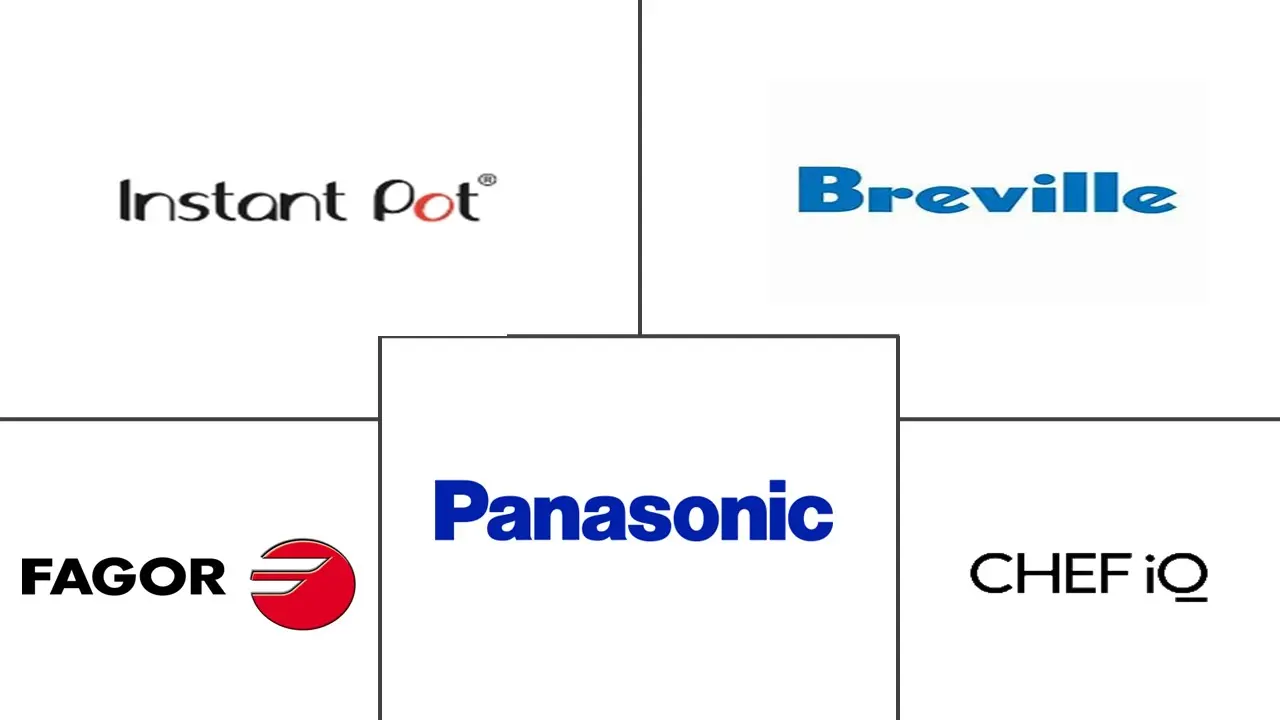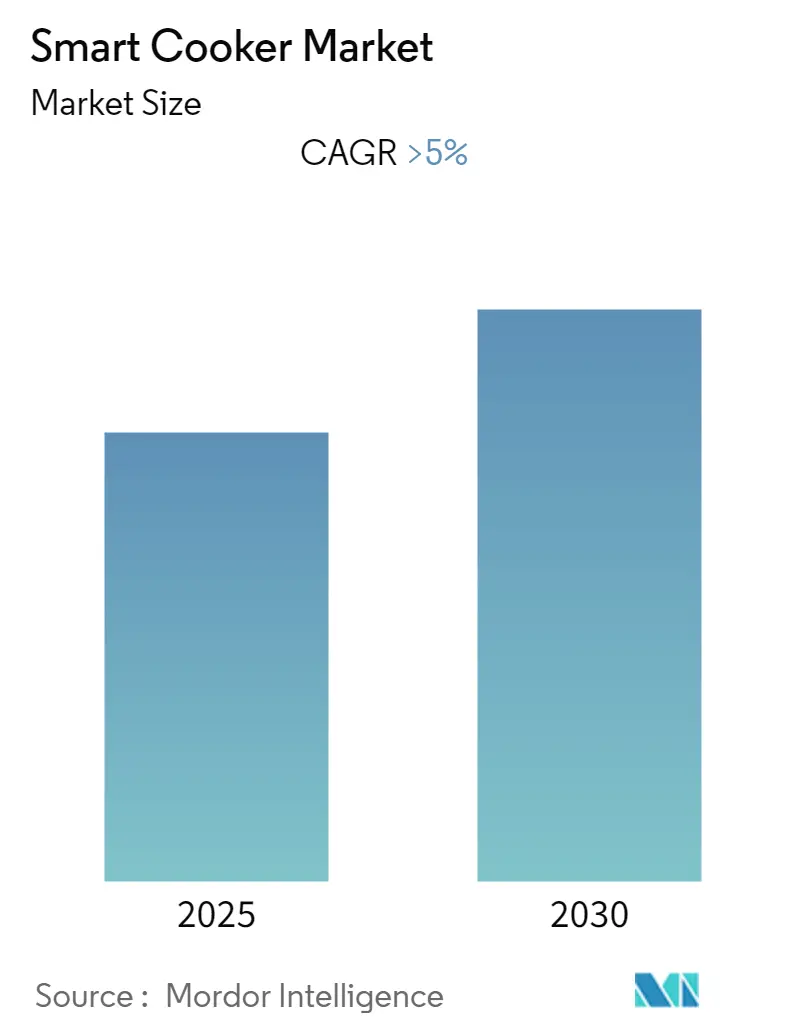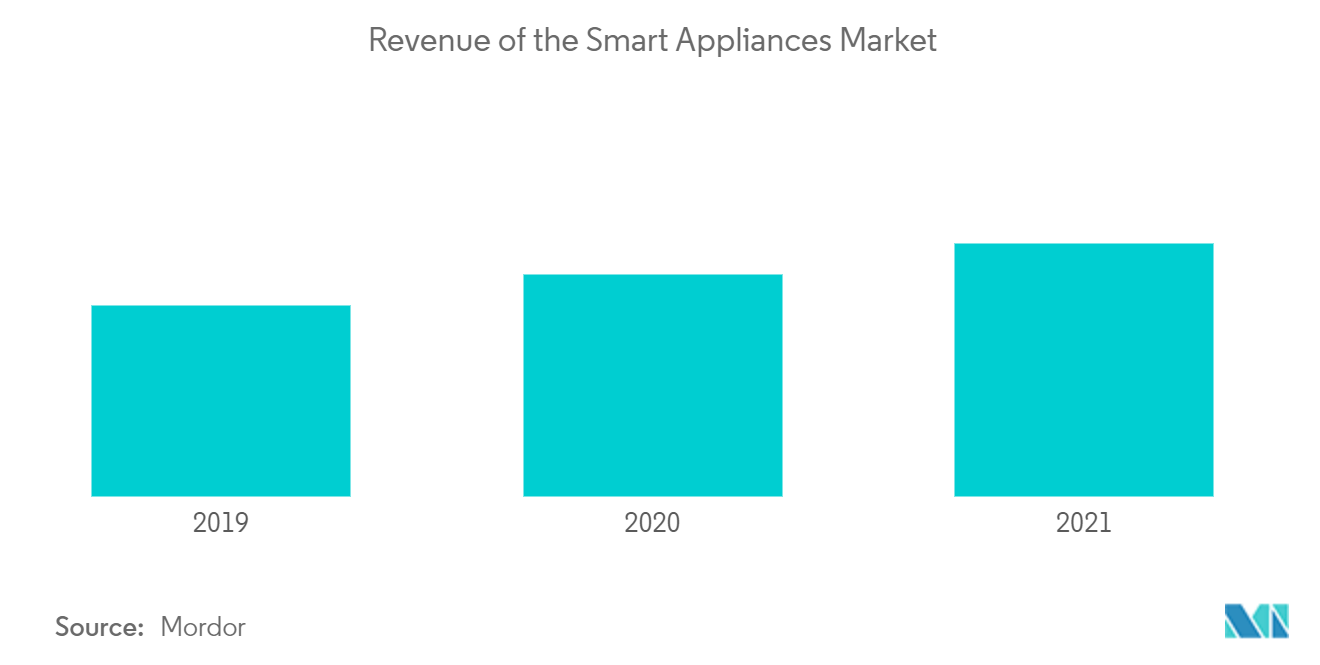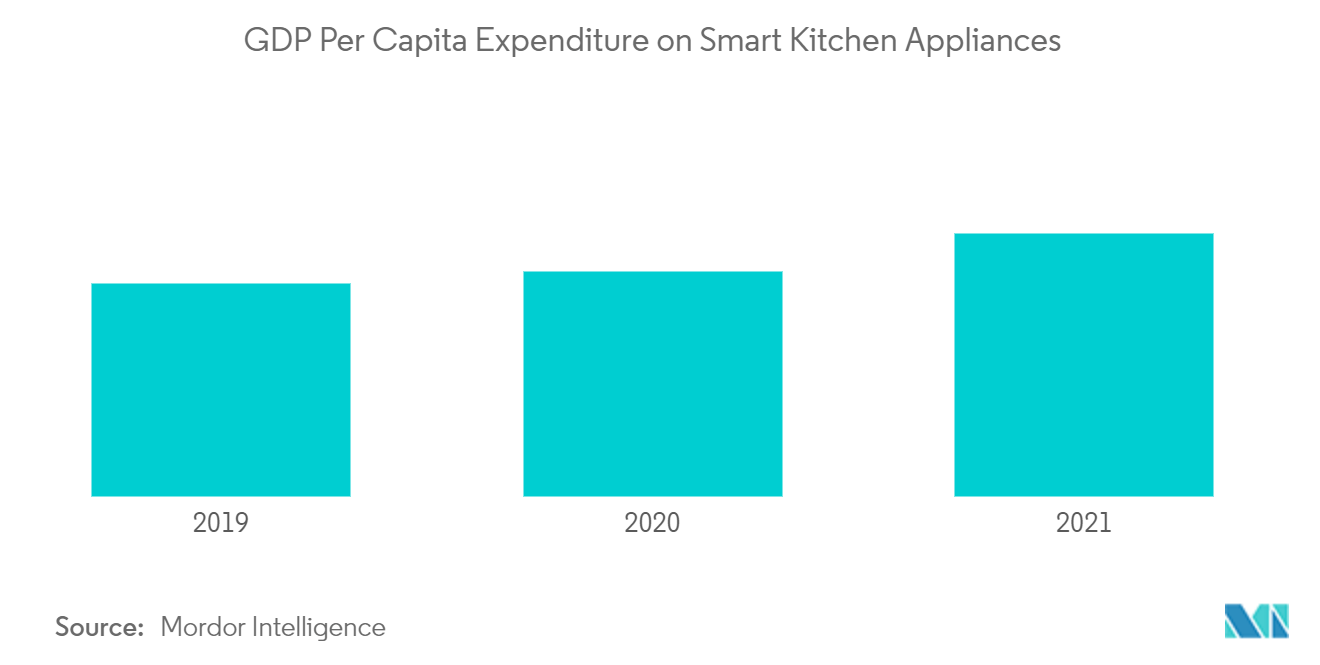Smart Cooker Market Analysis
The Smart Cooker Market is expected to register a CAGR of greater than 5% during the forecast period.
The global smart cooker market has certainly slowed down due to the COVID-19 outbreak but has gradually gained traction in the post-pandemic period. Governments all around the world have enacted lockdowns, which have had an impact on the majority of industrial players and forced people to stay inside their houses, reducing human contact. To maintain company continuity during the COVID-19 pandemic, the majority of businesses have allowed workers to work from home. This is anticipated to restrain the growth of the market for smart home devices throughout the forecast period. The limitations placed on production operations to adhere to social distance norms are predicted to impede the development of the electronics sector, which is then anticipated to limit the market share for the smart cooker market. Manufacturing operations in the electronics sector have been interrupted due to the COVID-19 crisis. Furthermore, the COVID-19 outbreak has resulted in the sealing of international borders, which has caused a severe decline in the demand for smart cooker devices and related products across the globe.
A smart cooker is a gadget that automates the cooking process using technology. The temperature, cooking time, and even ingredient additions while the appliance is running can all be managed in this manner. As it offers many advantages over conventional cookers, smart cookers are growing in popularity.
Smart Cookers are high-tech multi-function ovens, or "smart cookers," which may cook in a variety of ways with only a few basic commands (often a button push), reducing some of the guesswork involved in the cooking process. The entire cooking procedure is mechanized. The appliance cooks the meals at the ideal temperature and time, turn them off, and maintains warmth on its own.
Smart Cooker Market Trends
Increasing Popularity of Smart Appliances is Driving the Market
Smart appliances are typically incremental developments that enhance existing products with new capabilities rather than producing entirely new products. The relatively high product prices are the main source of a large number of revenues. Customers frequently start with lower-cost small appliances like vacuum robots or smart coffee makers, whereas those who already own products from other segments are more likely to buy large, more expensive appliances like refrigerators. In Europe and North America, we anticipate a more gradual adoption of devices, whereas Asia will accept them more swiftly.
There are many reasons why the market for smart appliances is expanding so quickly. These gadgets make consumers' lives easier because they can control all of their devices from one location. The growing need for home automation technology has also increased the demand for smart appliances. The capacity of smart appliances to save energy is another aspect driving demand. As an illustration, some smart ovens feature sensors that can tell when food is done and switch the oven off automatically to save energy and prevent the kitchen from being overheated. In addition to helping consumers save money on their energy costs, this kind of technology also lowers carbon emissions.
Rising Disposable Income and Purchasing Power is Driving the Market
Smart Kitchen Appliances are eco-friendly, user-friendly, and energy efficient, and consumers are lured to modern and smart appliances. Additionally, consumers can raise their spending on luxury smart kitchen appliances due to rising disposable income and purchasing power, which is driving up demand and the market. In the smart kitchen appliance market, the major cooking appliance segment increased at the fastest rate. Due to rising living standards and growing interest in smart-linked home appliances, this segment holds the largest share of the global market for smart kitchen appliances. The improved technology used in these appliances and their additional networking features also support the expansion.
The smart cooker market is expected to grow as consumer demand for user-friendly, energy-efficient appliances rises. Utilizing technology, smart cooker appliances may complete duties more swiftly and effectively. Smart cookers are more energy-efficient than conventional kitchen equipment. The capability to automatically shut off the appliances as needed while informing the owner is one of the main factors boosting the demand for smart kitchen equipment.
Smart Cooker Industry Overview
The smart cooker market is fragmented. Mid-size and smaller businesses are expanding their market presence by gaining new contracts and tapping new markets due to technological improvements and product innovations.
Smart Cooker Market Leaders
-
THE FAGOR
-
PANASONIC
-
INSTANT POT
-
BREVILLE
-
MIDEA
-
GAGGENAU HAUSGERATE
- *Disclaimer: Major Players sorted in no particular order
Smart Cooker Market News
- May 2022: TESCOM Electric Co., Ltd. (Headquarters: Shinagawa-Ku, Tokyo, Shiro), a company that creates and produces tiny home appliances with a focus on culinary and beauty products, launched The "Core Temperature Smart Cooker TLC70A" is the first low-temperature cooker in Japan that measures and cooks items at their "center temperature."
- October 2021: AUFLA opened its first manufacturing facility in India and released the country's first smart electric cooker, which won a prize at the Global Leap Awards 2020 in the "Best Energy Performance Category" worldwide. The award was organized by Modern Energy Cooking Services (MECS) and funded by UKAID. When utilized for an entire hour, the Smart Cooker was tested and shown to only use 0.4 units of electricity.
Smart Cooker Industry Segmentation
The report covers a thorough background analysis of the global smart cooker market, which includes a segment-by-segment assessment of emerging trends, notable changes in market dynamics, and a market overview. The research also includes a qualitative and quantitative assessment by examining information acquired from market participants and industry analysts at many crucial points along the industry's value chain.
The Smart Cooker Market is segmented by Capacity Type (Small (Less than 3qt), Medium (More than3.1qt - 6qt), Large (More than 6.1qt)), Distribution Channel (Home Centers, Specialty Stores, Online, and Other Distribution Channels) by Geography (North America, Europe, Asia- Pacific, Middle East and Africa, and Rest of the World). The report offers Market size and forecasts for Global Smart Cooker Market in value (USD Million) for all the above segments.
| Category | Small |
| Medium | |
| Large | |
| Distribution Channel | Home Centres |
| Speciality Stores | |
| Online | |
| Other Distribution Channels | |
| Geography | North America |
| Asia-Pacific | |
| Europe | |
| Middle East and Africa | |
| Rest of the World |
Smart Cooker Market Research FAQs
What is the current Smart Cooker Market size?
The Smart Cooker Market is projected to register a CAGR of greater than 5% during the forecast period (2025-2030)
Who are the key players in Smart Cooker Market?
THE FAGOR, PANASONIC, INSTANT POT, BREVILLE, MIDEA and GAGGENAU HAUSGERATE are the major companies operating in the Smart Cooker Market.
Which is the fastest growing region in Smart Cooker Market?
North America is estimated to grow at the highest CAGR over the forecast period (2025-2030).
Which region has the biggest share in Smart Cooker Market?
In 2025, the Asia-Pacific accounts for the largest market share in Smart Cooker Market.
What years does this Smart Cooker Market cover?
The report covers the Smart Cooker Market historical market size for years: 2020, 2021, 2022, 2023 and 2024. The report also forecasts the Smart Cooker Market size for years: 2025, 2026, 2027, 2028, 2029 and 2030.
Our Best Selling Reports
Smart Cooker Industry Report
Statistics for the 2025 Smart Cooker market share, size and revenue growth rate, created by Mordor Intelligence™ Industry Reports. Smart Cooker analysis includes a market forecast outlook for 2025 to 2030 and historical overview. Get a sample of this industry analysis as a free report PDF download.





.webp)

